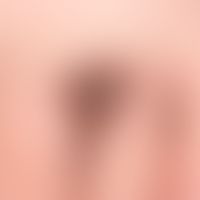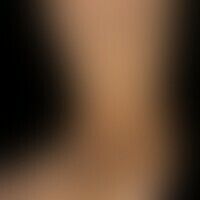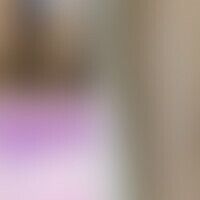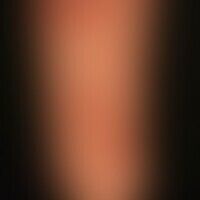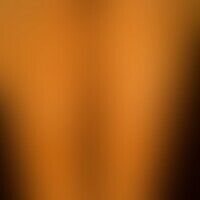Image diagnoses for "Plaque (raised surface > 1cm)", "brown", "Leg/Foot"
57 results with 114 images
Results forPlaque (raised surface > 1cm)brownLeg/Foot
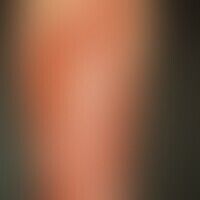
Necrobiosis lipoidica L92.1
Necrobiosis lipoidica: Waxy, reddish-brown, smooth, shiny infiltrate plates with several punched-out ulcers (after banal trauma) in type I diabetes in the area of the tibia.
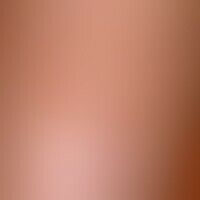
Keratosis seborrhoic (plaque type)
Keratosis seborrhoeic (plaque type): flat, regularly bordered, little pigmented, non-irritant plaque.
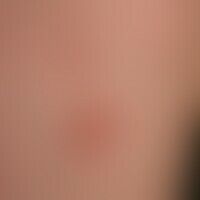
Necrobiosis lipoidica L92.1
Necrobiosis lipoidica: Overview of the left thigh: Approx. 3 cm large, slightly elevated, erythematous plaque without ulcerations.
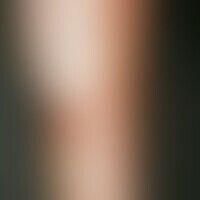
Necrobiosis lipoidica L92.1
Necrobiosis lipoidica: irregularly configured, sharply defined, plate-like, atrophic, "scleroderma-like", smooth plaques. brownish-yellow sunken centre with atrophy of skin and fatty tissue. reddish-violet to brownish-red rim.
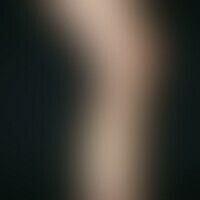
Nodular vasculitis A18.4
erythema induratum. solitary, chronically stationary, 4.0 x 3.0 cm in size, only imperceptibly growing, firm, moderately painful, reddish-brown, flatly raised, rough, scaly nodules with a deep-seated part (iceberg phenomenon). intermediate painful ulcer formation (Fig). no evidence of mycobacteriosis.

Nevus melanocytic acral D22.L
nevus melanocytic acral: completely sympotmless, congenital melanocytic, nevus that covers the sole and back of the foot. bizarre lateral borders, different shades of brown and black. six-monthly controls are indicated.
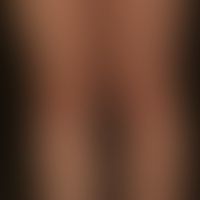
Circumscribed scleroderma L94.0
Scleroderma circumscripts (type band-shaped circumscripts scleroderma). 32-year-old woman, for years progressive symptoms. no significant symptoms. no restrictions in mobility.
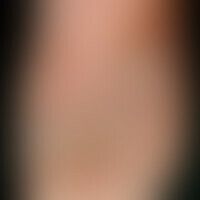
Papillomatosis cutis lymphostatica I89.0
Papillomatosis cutis lymphostatica. massive findings with papillomatous vegetation on the back of the foot and toes. condition after recurrent erysipelas.

Nodular vasculitis A18.4
Erythema induratum. 52-year-old secretary has been suffering for 3 years from this moderately painful lesion running in relapses. Findings: Clinical examination o.B. Local findings: 10 cm in longitudinal diameter large, firm plaque, interspersed with cutaneous and subcutaneous nodules. In the centre scarring, on the edge deep, poorly healing ulcerations (here crusty evidence).

Papillomatosis cutis lymphostatica I89.0
Papillomatosis cutis lymphostatica: Excessive findings with bark deposits on the lower legs and the back of the foot. In addition to the underlying papillomatosis cutis lymphostatica, this clinical picture is characterized by a distinct lack of care.
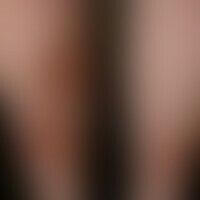
Necrobiosis lipoidica L92.1
Necrobiosis lipoidica: bilateral, gradually increasing, sharply defined, confluent, reddish-brownish, centrally distinctly atrophic plaques that have existed for about 2 years, increasing in consistency over the entire plaque.
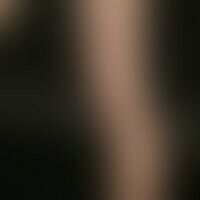
Nevus verrucosus Q82.5
Hyperkeratotic papules in linear arrangement from the left distal lower leg to the buttocks in a 15-year-old adolescent.
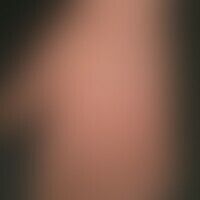
Contact dermatitis toxic L24.-
Contact dermatitis, toxic: Hyperkeratosis on inflammatory changed skin on the right wrist dorsally and on the back of the right hand of a 46-year-old patient.

Scar sarcoidosis D86.3
Scar sarcoidosis: Since about 9 months development of completely symptom-free plaque in an old irritation-free scar on the knee.

Scleroderma linear L94.1
Scleroderma ligamentous: for years slowly progressive, only moderately indurated ligamentous morphea in a 42-year-old woman; no movement restrictions of the joints; follicular structures within the lesions no longer detectable (inlet: mutual area with distinct keratosis follicularis).
